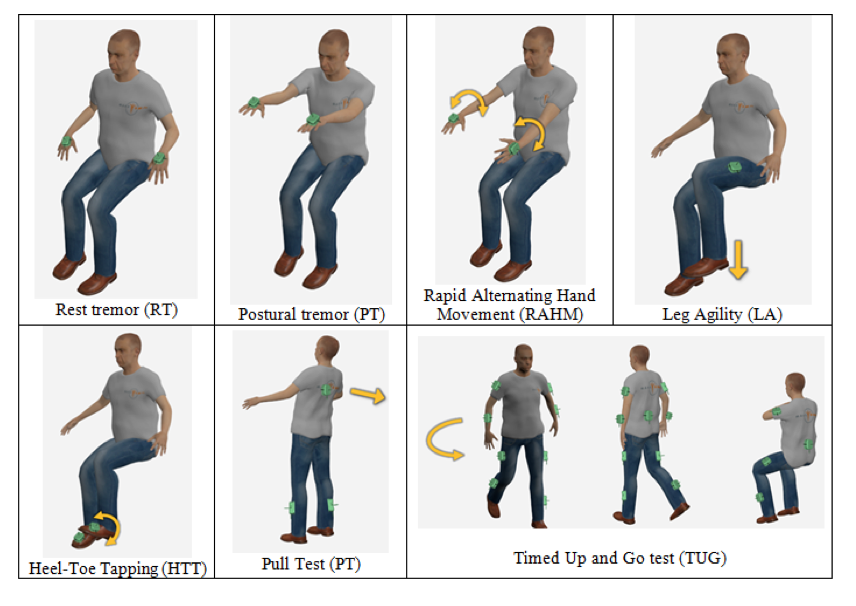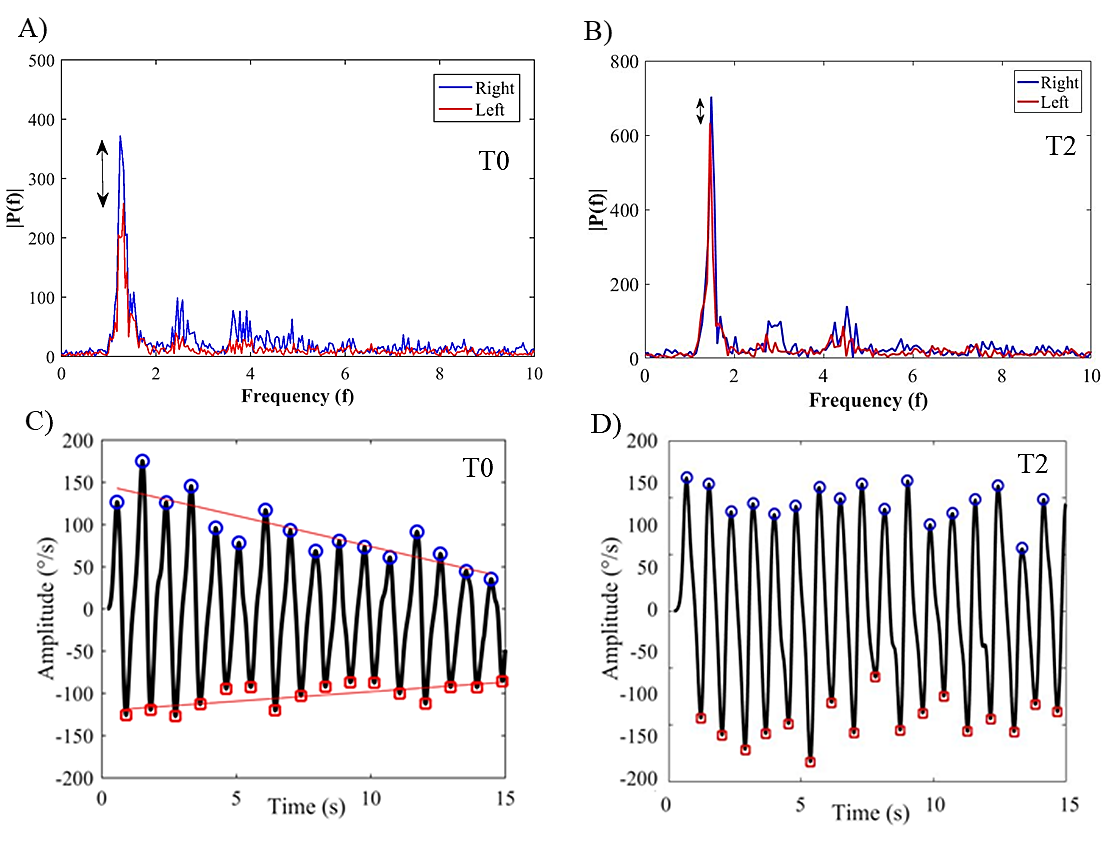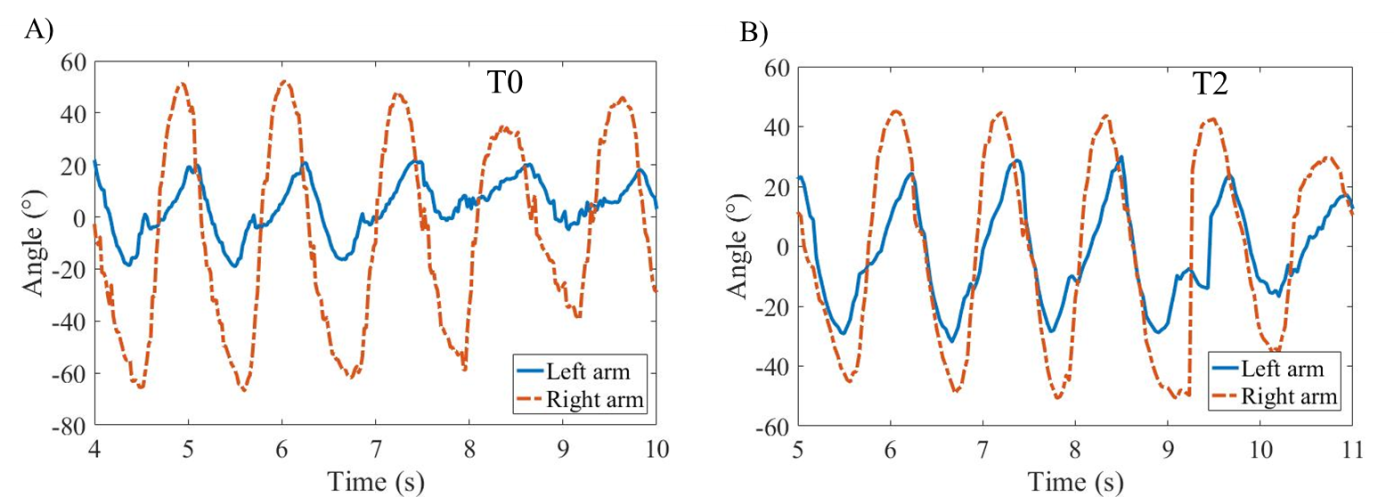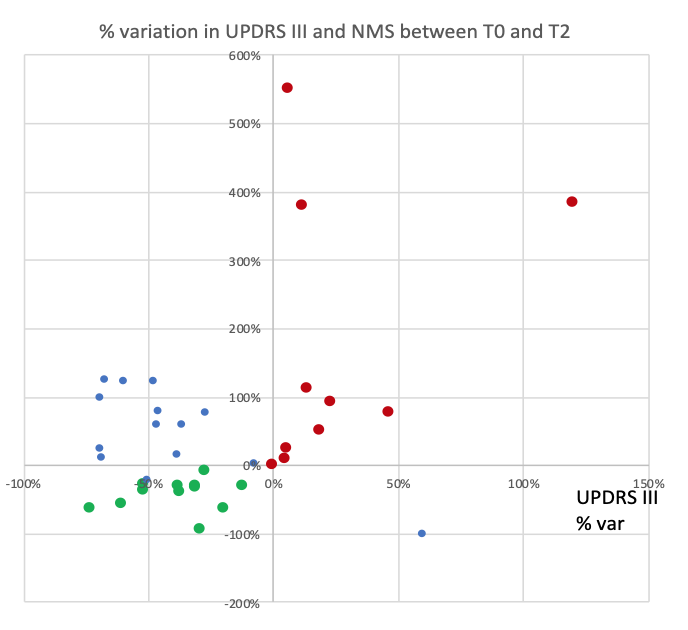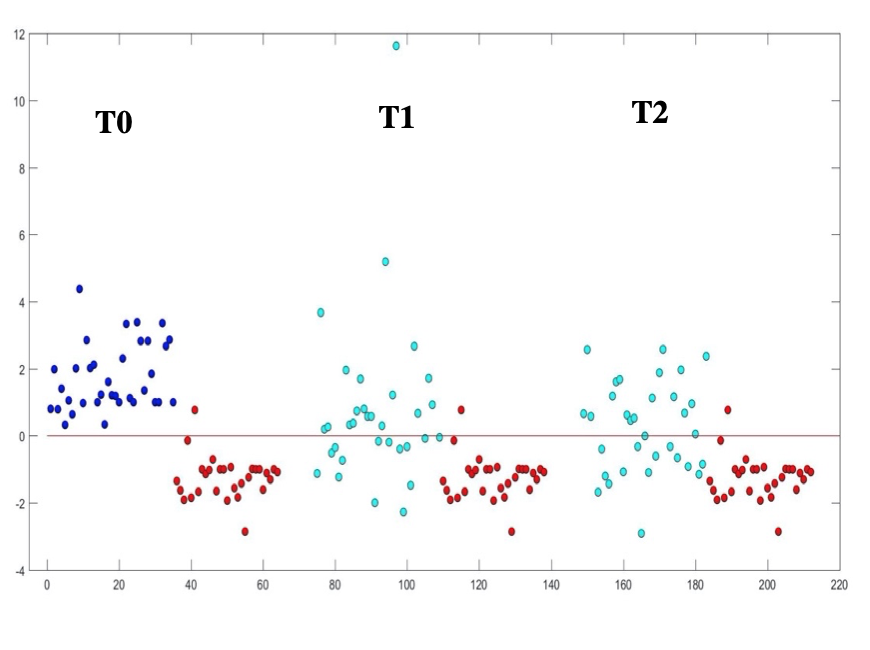Category: Technology
Objective: To prospectively evaluate motor performances with technology-based objective measures (TOMs) in a cohort of PD patients in order to identify therapy response and prognostic biomarkers.
Background: One major unmet need in Parkinson’s disease is the availability of non-invasive, early and reliable biomarkers, for diagnosis, prognosis and therapy response evaluation.
TOMs recently gained relevance to support clinicians in the assessment of motor function in movement disorders and in particular in Parkinson’s disease (PD), although limited data in the early phases and no prospective studies are available.
Method: we enrolled 40 consecutive drug free PD patients at movement disorders clinic at Tor Vergata University hospital. They were evaluated clinically by mean of UPDRS part II and III and NMS. Then they all underwent a kinematic assessment using a set of wearable inertial sensors, performing 7 motor tasks: rest tremor, postural tremor, rapid alternating hand movement, leg agility, heel to toe test, timed up and go test (TUG), pull test (PT). at the time of the enrolment (T0), all patients underwent a clinical and a kinematic assessment. Then, a dopamine replacement therapy was started and after 6 months a follow-up visit was planned (T1). At 12 months (T2), a new clinical and kinematic assessment was made. At 30-36 months (T3), a clinical evaluation was repeated.
Kinematic features at T0 and T2 were compared with Mann-Whitney test. At T3, responder and non-responder patients were defined according to the variation in their clinical scores. Then, a Mann Whitney test was performed on the kinematic features at T0 between these two groups.
Results: 36 patients completed the study. Among all the kinematic features, at T2 at least one per task was significantly improved. Interestingly, many features from TUG test and PT ameliorated, even if they were scored as normal in UPDRS. In addition, one feature from RAHM ad 6 features from TUG were significantly different between responder and non-responders at T0.
Conclusion: Our study demonstrates that motor alteration in PD are measurable and that many motor features significantly improve after a dopaminergic is initiated, even in tasks clinically not affected as gait and balance. Moreover, some kinematic feature, recorded at the time of the diagnosis, discriminated responders from non-responders patients.
References: [1] Parnetti L, Gaetani L, Eusebi P, Paciotti S, Hansson O, El-Agnaf O, Mollenhauer B, Blennow K, Calabresi P (2019) CSF and blood biomarkers for Parkinson’s disease. Lancet Neurol. 4422,. [2] Espay AJ, Bonato P, Nahab FB, Maetzler W, Dean JM, Klucken J, Eskofier BM, Merola A, Horak F, Lang AE, Reilmann R, Giuffrida J, Nieuwboer A, Horne M, Little MA, Litvan I, Simuni T, Dorsey ER, Burack MA, Kubota K, Kamondi A, Godinho C, Daneault JF, Mitsi G, Krinke L, Hausdorff JM, Bloem BR, Papapetropoulos S (2016) Technology in Parkinson’s disease: Challenges and opportunities. Mov. Disord. 31, 1272–1282. [3] Di Lazzaro G, Ricci M, Al-Wardat M, Schirinzi T, Scalise S, Giannini F, Mercuri NB, Saggio G, Pisani A (2019) Technology-Based Objective Measures Detect Subclinical Axial Signs in Untreated, de novo Parkinson’s Disease. J. Parkinsons. Dis.
To cite this abstract in AMA style:
G. Di Lazzaro, M. Ricci, T. Schirinzi, S. Scalise, G. Saggio, N.B Mercuri, A. Pisani. Technology-based therapy response and prognostic biomarkers in Parkinson’s disease: results from a prospective evaluation of a de novo PD patients’ cohort [abstract]. Mov Disord. 2020; 35 (suppl 1). https://www.mdsabstracts.org/abstract/technology-based-therapy-response-and-prognostic-biomarkers-in-parkinsons-disease-results-from-a-prospective-evaluation-of-a-de-novo-pd-patients-cohort/. Accessed April 26, 2025.« Back to MDS Virtual Congress 2020
MDS Abstracts - https://www.mdsabstracts.org/abstract/technology-based-therapy-response-and-prognostic-biomarkers-in-parkinsons-disease-results-from-a-prospective-evaluation-of-a-de-novo-pd-patients-cohort/

